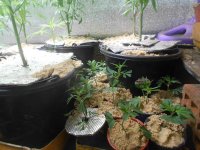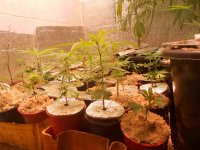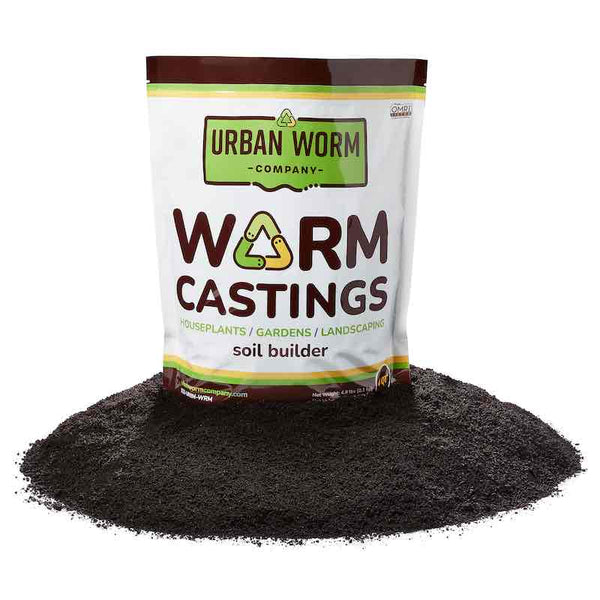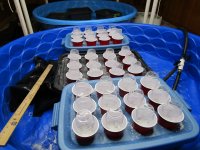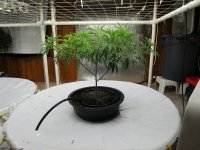Like any dedicated practitioner of the weed-growing sciences, I devoted copious amounts of time to online research delving into the best and most effective way of propagating clones. I constructed an elaborate water tank setup with twin air pumps running in relay on timers, and saw 20% success at best, with most of the clones succumbing to the dreaded grey stem rot syndrome. It made no difference whether I used Clonex rooting hormone, honey, or no hormone because the cuttings just drooped and died in droves.
Next, in a bid to "simplify" the cloning process, I tried a method also gleaned from this forum, in which I try to root the clones in plain tap water, after poking the stems through an inverted dixie cup with a hole in the floor to keep light out of the smaller cup of water. Again my success rate ranged between 5% and 10%, with the result that I tossed out large numbers of stem rotted clones daily until sometimes there were no survivors to plant out.
Finally, I tried a method that seemed way too crude and basic even to merit consideration, which was simply placing cuttings in a mixture of the worm castings I harvest free from the forest by the bagful, to which I added about a 20% by volume amount of white river sand I obtained from a dredging outfit operating on the river nearby. Right away, I realized I'd finally hit the motherlode, as not one single cutting is wilted or dead a full week after starting this latest attempt. In contrast, when rooting in water, I would be tossing out soggy-stemmed failed clones as early as day three.
My findings are therefore, that by using the free worm castings mixed with sand, I have FINALLY, and at long last, stumbled on the PERFECT medium for cannabis clone making, which produces 100% rooting success every freaking time without exception. No air pumps, no humidity dones, no rooting hormone, no laborious water changes, and absolutely ZERO clone losses mean that I will be using this simple technique until the cows come home.
I refined the process slightly to prevent the worm casting/sand mix from drying out under the grow lights, by adding a top layer of pure white sand which remains moist to the touch and also helps reflect the grow light energy into the clone's leaves. I will post a picture of these thriving clones later today, but I simply couldn't wait to share this astounding research finding that I stumbled across purely by chance. One final detail is that I water from beneath the dixie cups, by having them stand in a tray containing an inch-thick layer of pure worm castings that I keep moist with additions of water every third or fourth day. This ensures that the top layer of white sand never gets disturbed and watered into the castings and sand mix that is my super-thrive clone medium.
Next, in a bid to "simplify" the cloning process, I tried a method also gleaned from this forum, in which I try to root the clones in plain tap water, after poking the stems through an inverted dixie cup with a hole in the floor to keep light out of the smaller cup of water. Again my success rate ranged between 5% and 10%, with the result that I tossed out large numbers of stem rotted clones daily until sometimes there were no survivors to plant out.
Finally, I tried a method that seemed way too crude and basic even to merit consideration, which was simply placing cuttings in a mixture of the worm castings I harvest free from the forest by the bagful, to which I added about a 20% by volume amount of white river sand I obtained from a dredging outfit operating on the river nearby. Right away, I realized I'd finally hit the motherlode, as not one single cutting is wilted or dead a full week after starting this latest attempt. In contrast, when rooting in water, I would be tossing out soggy-stemmed failed clones as early as day three.
My findings are therefore, that by using the free worm castings mixed with sand, I have FINALLY, and at long last, stumbled on the PERFECT medium for cannabis clone making, which produces 100% rooting success every freaking time without exception. No air pumps, no humidity dones, no rooting hormone, no laborious water changes, and absolutely ZERO clone losses mean that I will be using this simple technique until the cows come home.
I refined the process slightly to prevent the worm casting/sand mix from drying out under the grow lights, by adding a top layer of pure white sand which remains moist to the touch and also helps reflect the grow light energy into the clone's leaves. I will post a picture of these thriving clones later today, but I simply couldn't wait to share this astounding research finding that I stumbled across purely by chance. One final detail is that I water from beneath the dixie cups, by having them stand in a tray containing an inch-thick layer of pure worm castings that I keep moist with additions of water every third or fourth day. This ensures that the top layer of white sand never gets disturbed and watered into the castings and sand mix that is my super-thrive clone medium.


